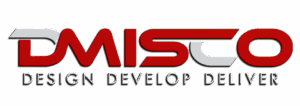Understanding CNC Milling
CNC milling involves the use of rotary cutters to remove material from a workpiece. It is ideal for complex shapes, flat surfaces, and intricate detailing. In this process, the workpiece stays still while the cutting tool moves along multiple axes.
Understanding CNC Turning
In CNC turning, the workpiece rotates while a cutting tool moves linearly to remove material. This process is perfect for cylindrical parts like shafts, pins, or bushings. CNC turning is highly efficient and offers great precision for symmetrical components.
Key Differences Between Milling and Turning
The main difference lies in how the material is manipulated. Milling is best for parts with complex profiles, slots, and cavities. Turning is used for round parts or those with consistent diameters. Milling offers versatility, while turning provides speed and accuracy for specific part types.
Applications in the Industry
Milling is widely used for parts in aerospace, mold making, and electronics, while turning is common in automotive and mechanical industries. Many complex assemblies require a combination of both to achieve the desired functionality and fit.
Which Should You Choose?
If your part is symmetrical and round, turning is likely your best bet. For more complex shapes and angles, milling may be more appropriate. At DMISCO, we offer both services—helping you choose the most efficient and cost-effective machining method for your needs.
